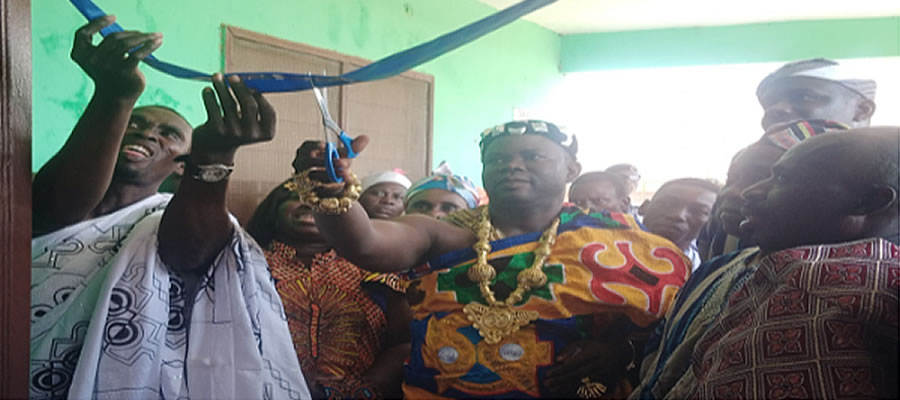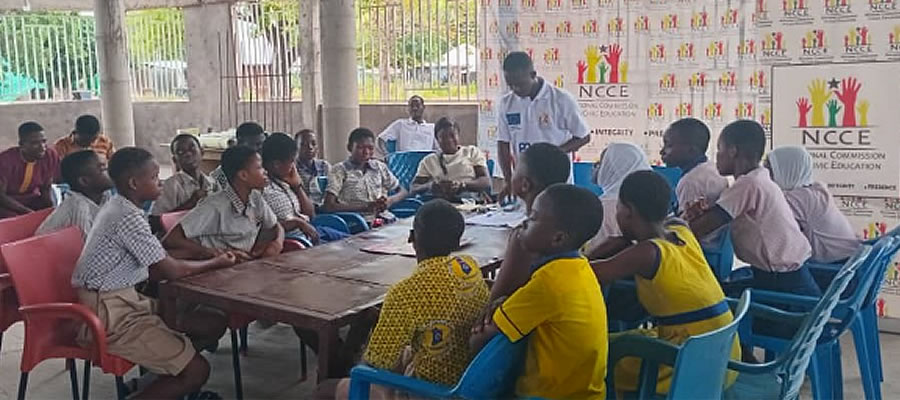

Literacy and Education This section seeks to find out the literacy levels and educational attainment of all persons 11 years and older captured in the District by the 2010 Population and Housing Census. Literacy is measured by ability to read and write a simple statement in any language with understanding for all persons 11 years and older.
Education On the other hand, males (37.8%) dominate the population 3 years and older currently attending school. 18 percent attended school in the past, yet 44.1 never attended any school. With respect to sex distribution, there are 40.2 percent males as against 35.3 percent of female currently in school. There are also more males (21.0%) compared to females (15.0%) who have attended school in the past.
Population 3 Years and Older by Level of Education, School Attendance and Sex Appendix Table 3 provides information on the population 3 years and older by sex who are currently attending school or attended school in the past. Out of the 29,506 who have ever attended school, 19,950 or 67.6% are currently attending school and 9,556 or 32.4% attended school in the past.
At the Pre-school level of education (Nursery and Kindergarten), 24.4 percent are currently in school. About two-thirds (66.9%) of those currently in school are in basic school (Primary, Middle and J.S.S/J.H.S). Less than ten percent (8.0%) are at the secondary school level (S.S.S/S.H.S, Secondary) and an even smaller proportion (0.8%) has gone beyond secondary level. The District, thus, is lacking students who are currently in school at higher level.
The situation in relation to past school attendance is equally not encouraging. There is no past attendance at the pre-school level due to non-availability of the pre-school system. About three in four (77.0%) of past school attendants were in basic school. Less than three percent (2.8%) attended secondary level. However, more of the population attended schools beyond the secondary school level in the past (5.5%) than now (0.8%). Among those currently attending school, 54.1 percent are males while 45.9 percent are females. For the 9,556 who attended school in the past, almost six out of 10 (59.1%) are males. The remaining 40.9 percent are females.
At the Pre-School (Nursery and K.G.) level of education, 23.4 percent of males and 25.5 percent females are currently attending school. At the basic school level (primary, JSS/JHS, middle), about the same proportion of females (67.3%) as males (66.7%) are currently attending school. A higher proportion of males (9.0%) than females (6.8%) are currently attending secondary school level (SSS/SHS, Secondary). Current school attendance at higher levels beyond the secondary school levels in the District is very low (0.8% for males and 0.5% for females).
The number of females (3,899 or 40.8%) who attended school in the past is lower than for males (59.2%). At the basic school level, the proportion who attended school in the past is lower for males (72.1%) than for females (84.0%). However, a higher proportion of males (17.4%) than females (11.7%) have attended secondary school level (S.S.S/S.H.S, Secondary). Also about two-and-half times the proportion of males (10.5%) compared to females (4.3%) have attended higher education in the past beyond the secondary school level in the District.
Literacy Literacy refers to a person’s ability to read and write in any language with understanding. In the 2010 PHC, a person was considered literate if he/she could read, write, and understand a simple statement with understanding. The question relating to literacy was asked of persons 11 years and older. Table 3.9 presents the distribution of population 11 years and older by sex and language they can read and write. Across all the age groups, majority of the population are literate in English and one other Ghanaian language. The second highest across all the age-groups is literacy in English only. A higher proportion of the females compared to males speak are literature in English language only. However, for literacy in English and a Ghanaian language, males dominate females proportionally by over eight percent. For literacy in a Ghanaian language only, there is a higher proportion of females compared to males.
Again, the Table shows that, the not-literate population 11 years and older is slightly lower (19,125) compared to the literate population of 19,212. Majority of the literate population are between the ages 15-19 (26%) while person within age group 60-64 accounted for the least proportion of literates (1.2). More than half (57.8%) of literate population are males as compared to 42.2 percent literate females.
Table 3.9: Population 11 years and older by sex, age and literacy status Literate
Sex/Age group
None (Not literate) Number Total
English only
Ghanaian language only
English and Ghanaian language
English and French
English French and Ghanaian Language Both sexes
42
Table 3.9: Population 11 years and older by sex, age and literacy status (cont’d) Literate
Sex/Age group
None (Not literate) Number Total
English only
Ghanaian language only
English and Ghanaian language
English and French
English French and Ghanaian Language Male
Date Created : 11/20/2017 3:05:09 AM









 facebook
facebook
 twitter
twitter
 Youtube
Youtube
 +233 593 831 280
+233 593 831 280 0800 430 430
0800 430 430 GPS: GE-231-4383
GPS: GE-231-4383 info@ghanadistricts.com
info@ghanadistricts.com Box GP1044, Accra, Ghana
Box GP1044, Accra, Ghana